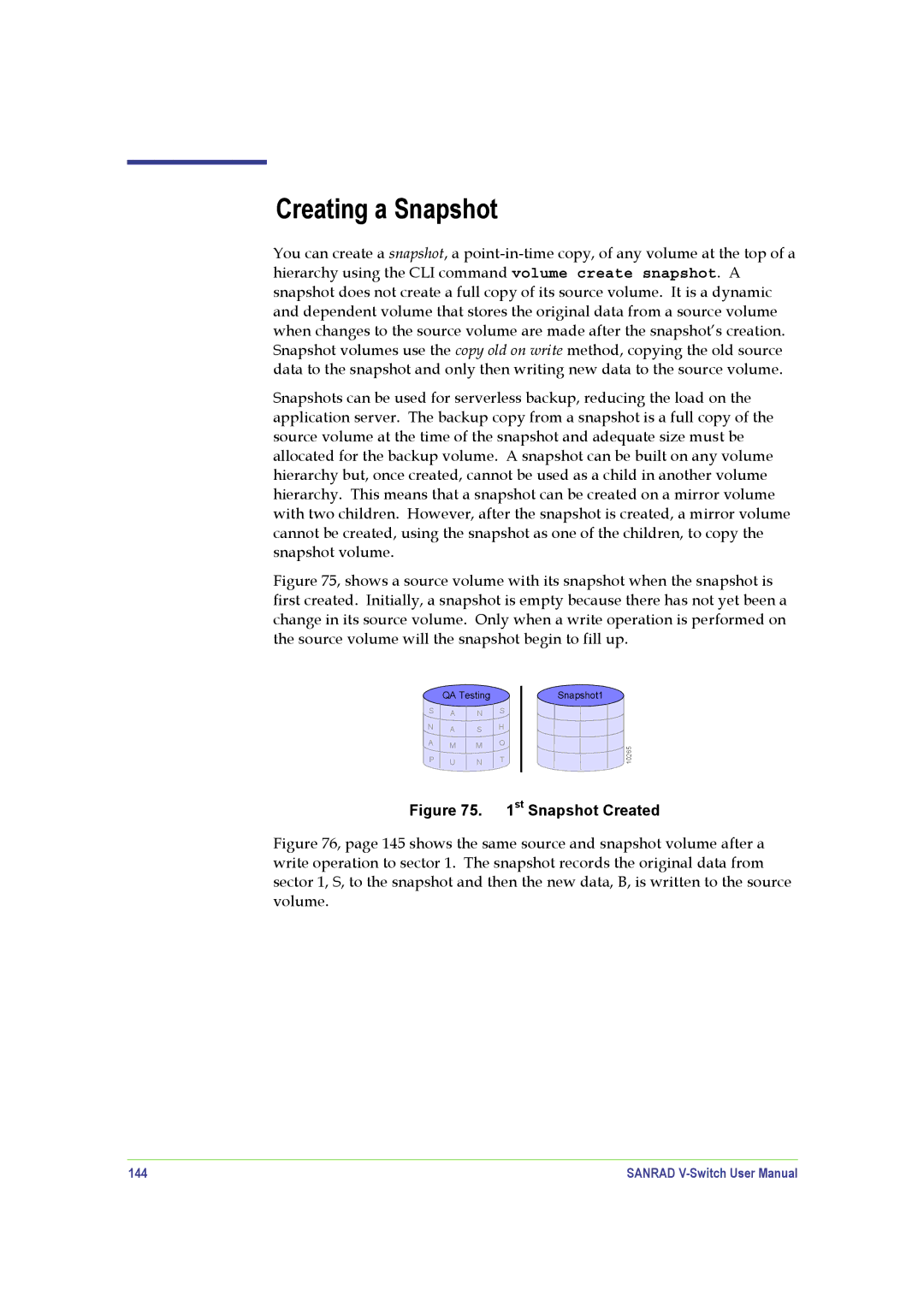
Creating a Snapshot
You can create a snapshot, a
Snapshots can be used for serverless backup, reducing the load on the application server. The backup copy from a snapshot is a full copy of the source volume at the time of the snapshot and adequate size must be allocated for the backup volume. A snapshot can be built on any volume hierarchy but, once created, cannot be used as a child in another volume hierarchy. This means that a snapshot can be created on a mirror volume with two children. However, after the snapshot is created, a mirror volume cannot be created, using the snapshot as one of the children, to copy the snapshot volume.
Figure 75, shows a source volume with its snapshot when the snapshot is first created. Initially, a snapshot is empty because there has not yet been a change in its source volume. Only when a write operation is performed on the source volume will the snapshot begin to fill up.
QA Testing
S A N S
N A S H
A M M O
P U N T
Snapshot1
![]() 10265
10265
Figure 75. 1st Snapshot Created
Figure 76, page 145 shows the same source and snapshot volume after a write operation to sector 1. The snapshot records the original data from sector 1, S, to the snapshot and then the new data, B, is written to the source volume.
144 | SANRAD |
